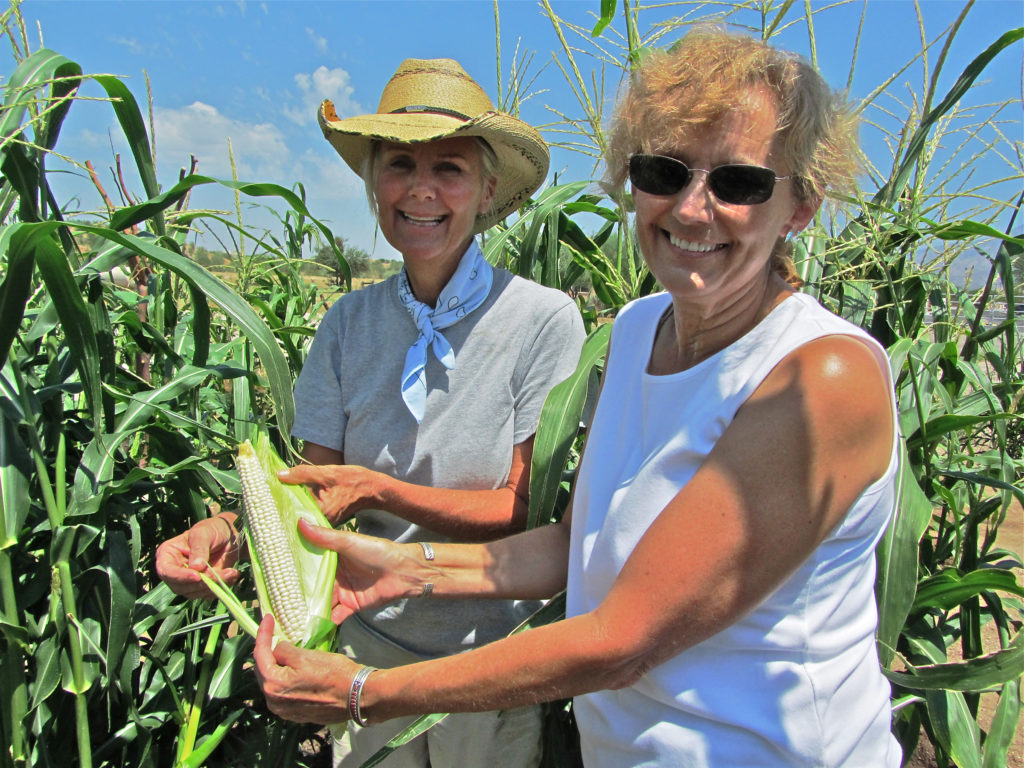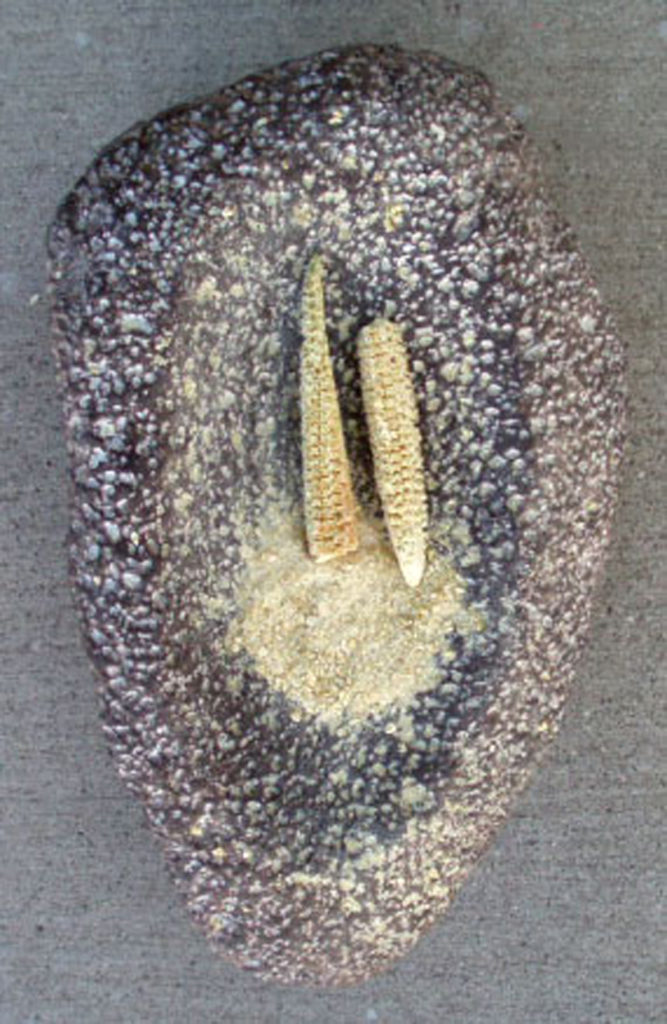
Experimental Archaeology: Traditional Maize Gardening and Grinding
Jenny Adams, Desert Archaeology’s resident internationally recognized expert on ground stone technology, writes this week’s blog about collaborating with heritage gardener Joyce Rychener.
Everyone should know about Joyce Rychener and her Heritage Garden project at Steam Pump Ranch in Oro Valley, Arizona. Her work at the garden, growing heirloom crops using traditional techniques, has been an essential component of my experimental archaeology program, designed to investigate how ancient peoples processed different varieties of maize and used them in their diets. Joyce believes that heritage gardens are a down-to-earth method for reconnecting our twenty-first century lifestyles with our innate agrarian roots, and wants everyone to enjoy locally, organically grown foods.
Here in southern Arizona, we have access to seeds for wild plants and domesticated crops that have been gathered and grown for centuries. We are lucky to have a source for ancient seed varieties at Native Seeds/SEARCH, an organization that seeks, grows, stores, and sells heritage seeds, especially those grown by Native American farmers in northern Mexico and the greater U.S. Southwest. These endeavors go beyond aiding individual gardeners—they helped Tucson become a UNESCO City of Gastronomy.
They are also important to me as an archaeologist who is interested in the food-processing techniques of those who lived before us in the Tucson Basin. In particular, I wanted to figure out how the foods grown in the waffle gardens at the Early Agricultural period (2100 B.C.-A.D. 50) site of Las Capas were incorporated into the farmers’ diets using the types of ground stone tools we found there, given the fact that these people did not have ceramic pots for cooking or storing foods. I needed someone to grow the varieties of maize that were as close as we could get to the popcorns grown at Las Capas. Desert Archaeology’s Henry Wallace suggested that I contact Joyce, and she and Native Seeds/SEARCH came to my rescue. After looking at all the varieties of maize in stock at Native Seeds/SEARCH, Joyce and I decided that the Chapalote and Reventador maize varieties were the best fit with the archaeological specimens.
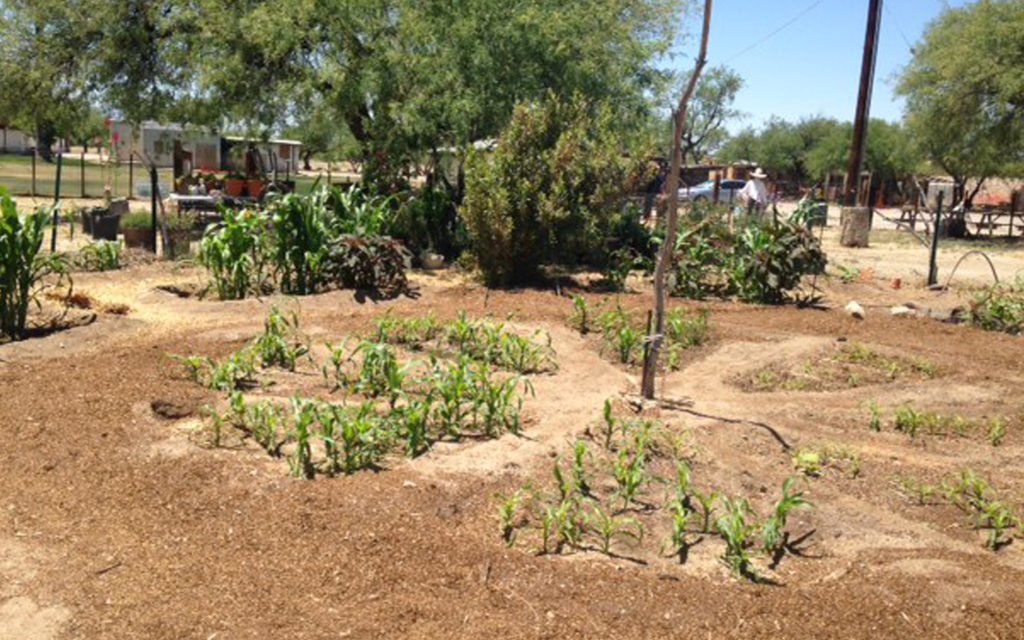
Inspired by the waffle gardens at Las Capas, Joyce planted the Heritage garden in small cells with ditches between so they could be irrigated.
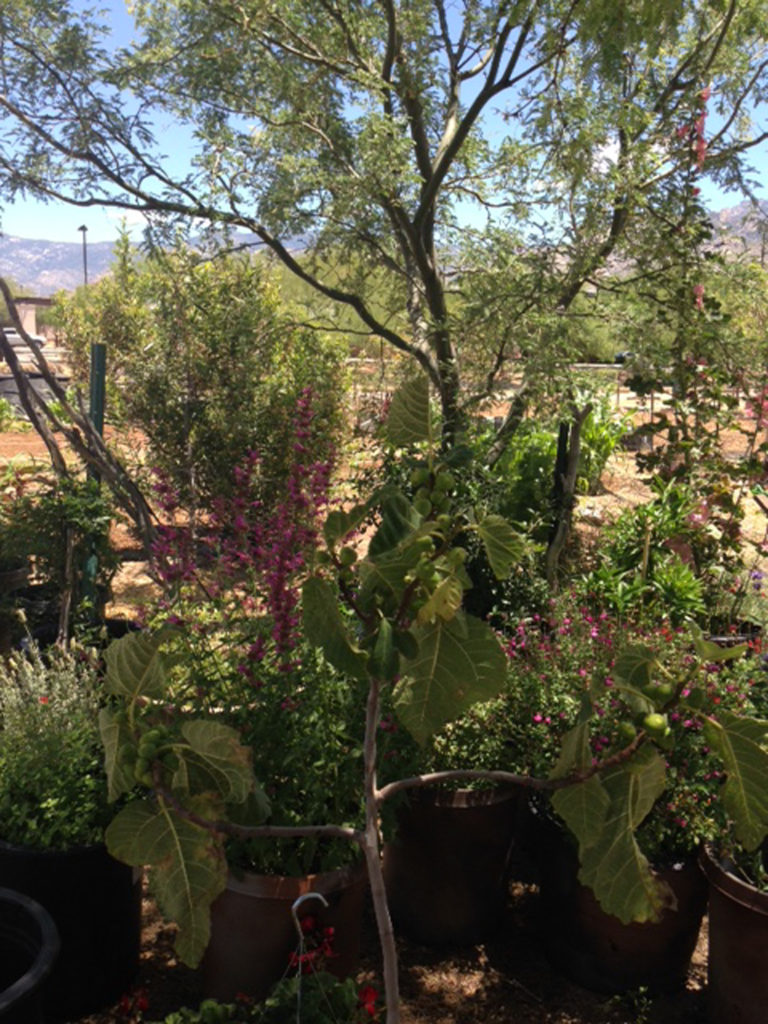
A line of mature mesquite trees provide shade near the garden, and other flowers planted between the trees and the garden help attract bees and other pollinators to the garden plants.
Joyce planted seeds and I went to the virtual library to read up on early maize varieties. Research into the nutritional values of immature maize quickly grabbed my attention and curiosity. Why would people eat plants that hadn’t ripened? One important benefit is that the niacin (vitamin B3) in immature maize is easily digested—there would be no worrying about suffering from the pellagra that comes with an increased dietary dependence on maize as long as enough of it was eaten while the plants were young enough. So off Joyce and I went in a new research direction: what if these Early Agricultural period farmers harvested and consumed their maize while it was immature?
Once the maize plants in the Heritage Garden became shoulder high, we started a series of experiments. We harvested some stalks before any ears were set.
The juice we squeezed out of these stalks was incredibly sweet. From older stalks, we picked immature ears and let them dry. We ground these dried ears using replicas of the mano and metate types found at Las Capas and learned that it was easy to grind both the kernels and cobs together into extremely fine-grained, sweet flour.
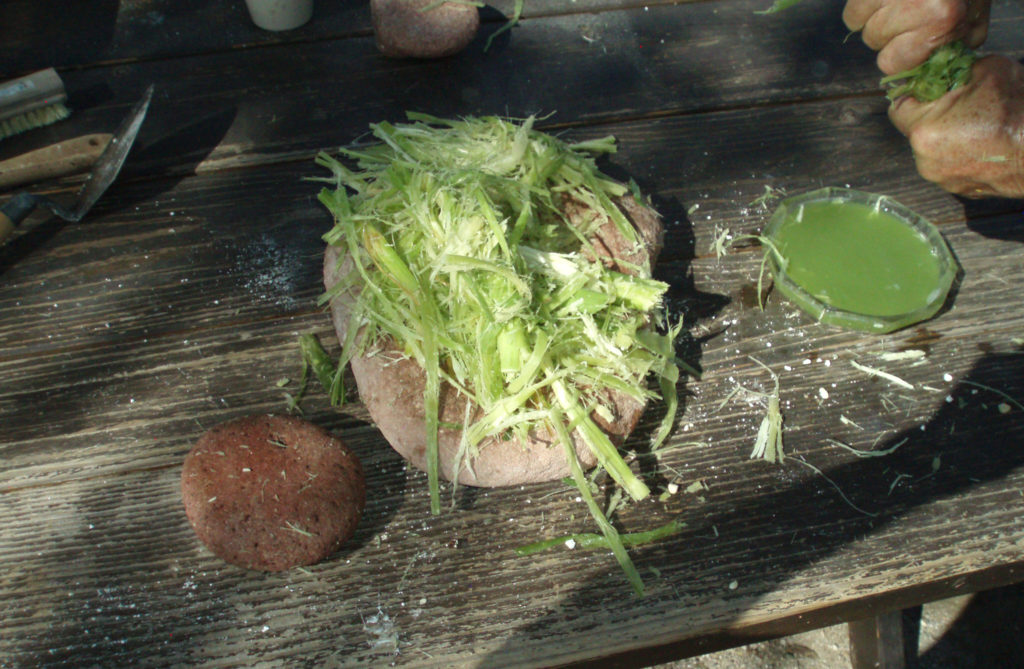
Immature corn stalks are piled in a metate where they were pounded with a round mano (lower left) before being squeezed to extract sweet green juice (upper right).
We allowed other ears to mature and dry on the stalk. Getting those round, hard kernels off the dried cobs was nearly impossible, as was keeping them on the metate for grinding with a mano, or in a mortar for smashing with a pestle. Furthermore, the result was minimal flour and abundant bits of pericarp (the bits that get stuck in your teeth when eating popcorn at the movies!). Our last experiment was to parch the dried cobs over coals in a fire pit. In less than 10 minutes we had ears with kernels that were easy to remove and easy to grind into abundant fine-grained flour with a wonderful, slightly nutty taste.
Sweet? Nutty? These are terms used to describe cuisine! I suspect these early farmers had an incredible recipe repertoire using grown, gathered, and hunted foods, and understood the benefits and hazards all of them presented at different points in their life cycle. Careful experimentation—made possible by Joyce Rychener’s passion for preserving traditional agriculture, sharing her knowledge with others, and continually seeking to learn more—has been the key to expanding our understanding of the possibilities and challenges facing ancient peoples as they wrested a living from our desert environment.
Notes
Jenny Adams, Joyce Rychener, and Melissa Kruse-Peeples (Native Seeds/SEARCH) are giving a talk about the experimental maize program at the 2017 Arizona Historic Preservation Conference. If you’ve registered for the conference, look for them at 10:50 am on Thursday, June 15, in the Agave room at the Hilton El Conquistador in Oro Valley.
The results from these experiments and more thoughts about farming and processing maize are published in a Desert Archaeology technical report, available for purchase.



